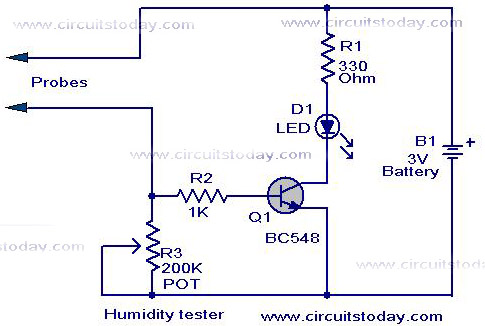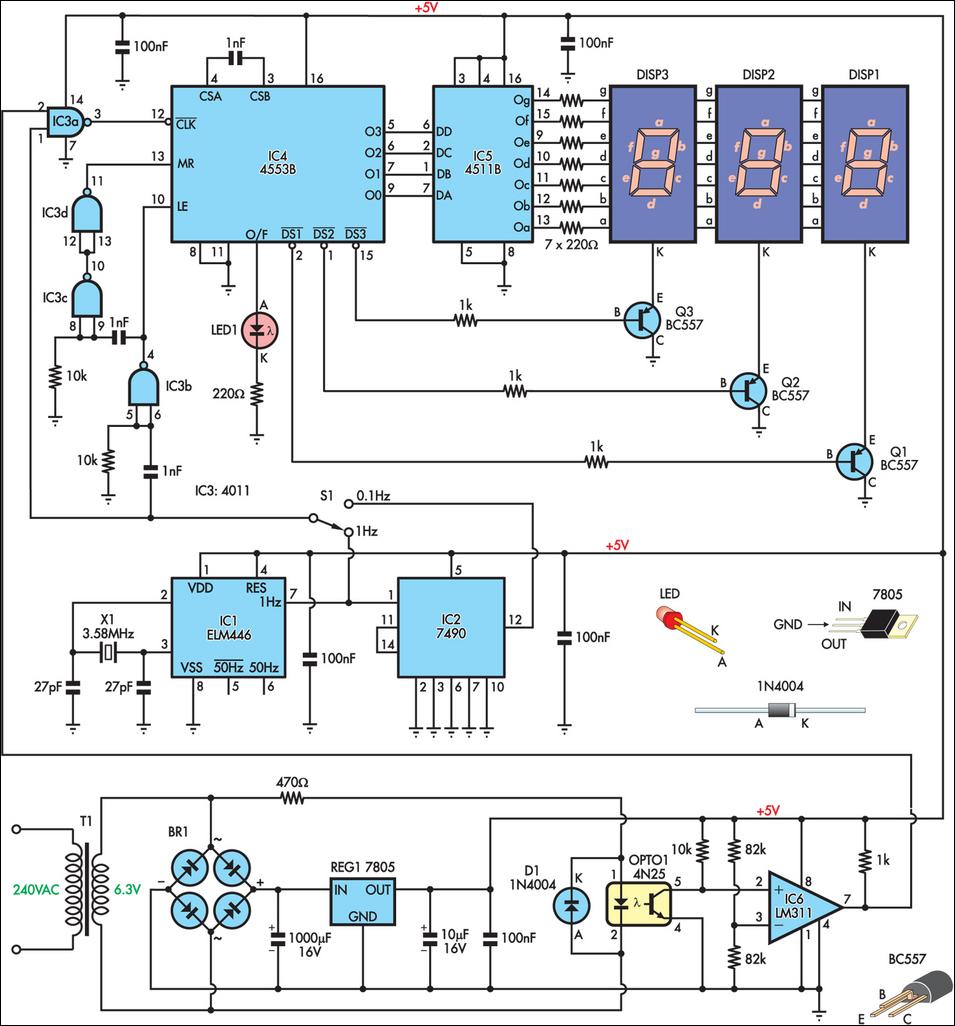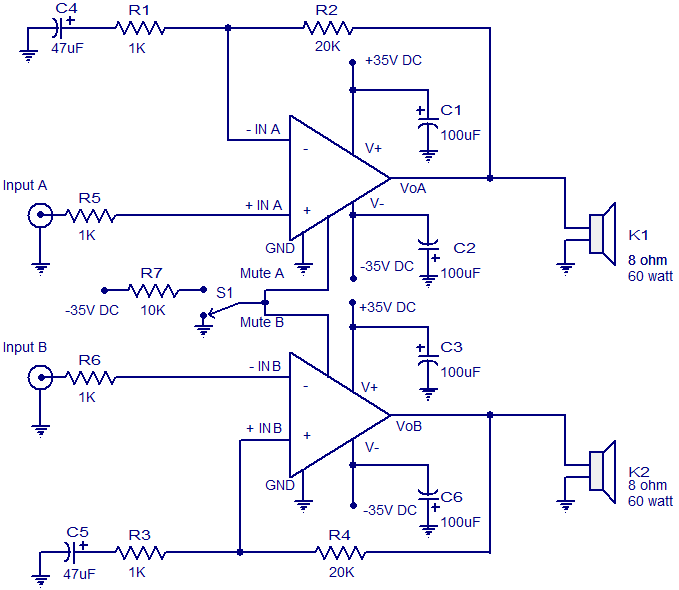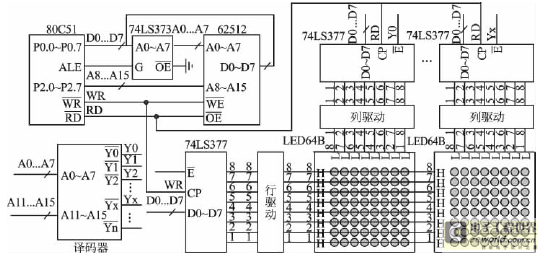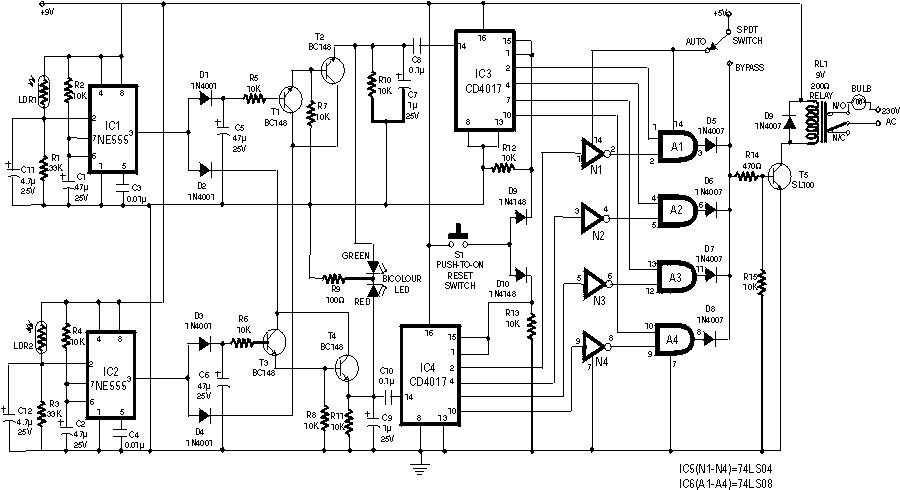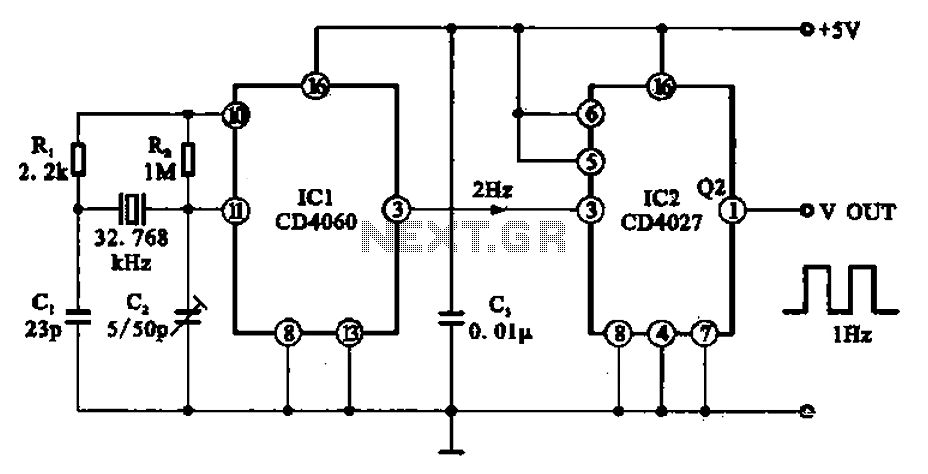
Mini Voice Operated Relay circuit diagram
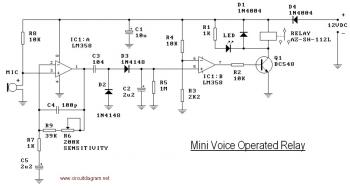
This circuit diagram illustrates a voice-operated relay, which functions similarly to a sound-activated switch circuit. It activates and deactivates the switch based on sound input. The output switch of this circuit is controlled by a relay. The release time constant can be modified using components C2 and R5, allowing for a delay of up to 30 seconds before the switch turns off. To achieve this, C2 can be increased to 10µF and R3 to 3.3MΩ. For ease of adjustment, it is recommended to use a potentiometer or trimpot to vary the resistor value. This may require additional space on the PCB, but it simplifies the adjustment process.
The voice-operated relay circuit is designed to respond to sound inputs, activating a relay that controls a connected load. The core components of this circuit typically include a microphone for sound detection, an amplifier to enhance the microphone's signal, and a relay driver circuit that switches the relay on and off based on the amplified sound signal.
The microphone captures sound waves, converting them into an electrical signal. This signal is then amplified to ensure that even quiet sounds can trigger the relay. The amplifier may consist of operational amplifiers configured in a non-inverting arrangement to boost the microphone's output. The gain of the amplifier can be adjusted to suit the environment's noise level.
The relay driver stage is crucial for controlling the relay. It often includes a transistor that acts as a switch, turning on when the amplified sound signal exceeds a certain threshold. This threshold can be set using a variable resistor or potentiometer, allowing for customization based on the specific application or environment.
The timing circuit, which includes components C2 and R5, determines how long the relay remains activated after the sound input ceases. By increasing the capacitance of C2 and adjusting R5, the delay can be tailored to meet the requirements of the user. The choice of a potentiometer or trimpot for R5 facilitates easy adjustments without the need for soldering, making it user-friendly.
The relay itself is rated for the voltage and current of the load it will control. It is essential to choose a relay that can handle the electrical specifications of the connected device to ensure safe and reliable operation. The output from the relay can be used to control various devices, such as lights, fans, or other electrical appliances.
Overall, this voice-operated relay circuit provides a versatile solution for sound-activated control, with adjustable timing and sensitivity features that enhance its usability in different applications. Proper design considerations, including component selection and layout on the PCB, will ensure optimal performance and reliability of the circuit.This is the circuit diagram of a voice operated relay. It similar with sound activation switch circuit which will turn on and turn off (connect and disconnect) the switch depending on the sound input. The output switch of this circuit is act by a relay. You could change the release time constant (C2 & R5) to say 30 seconds and use the VOX as a lig ht switch with this delay time before turning off. Increase C2 to say 10uF and R3 to 3M3. To make the easy adjustment, you may use potensiometer or trimpot to varying the value of resistor. You will need additional place on the PCB but it will easier for you to make some adjustment 🔗 External reference
The voice-operated relay circuit is designed to respond to sound inputs, activating a relay that controls a connected load. The core components of this circuit typically include a microphone for sound detection, an amplifier to enhance the microphone's signal, and a relay driver circuit that switches the relay on and off based on the amplified sound signal.
The microphone captures sound waves, converting them into an electrical signal. This signal is then amplified to ensure that even quiet sounds can trigger the relay. The amplifier may consist of operational amplifiers configured in a non-inverting arrangement to boost the microphone's output. The gain of the amplifier can be adjusted to suit the environment's noise level.
The relay driver stage is crucial for controlling the relay. It often includes a transistor that acts as a switch, turning on when the amplified sound signal exceeds a certain threshold. This threshold can be set using a variable resistor or potentiometer, allowing for customization based on the specific application or environment.
The timing circuit, which includes components C2 and R5, determines how long the relay remains activated after the sound input ceases. By increasing the capacitance of C2 and adjusting R5, the delay can be tailored to meet the requirements of the user. The choice of a potentiometer or trimpot for R5 facilitates easy adjustments without the need for soldering, making it user-friendly.
The relay itself is rated for the voltage and current of the load it will control. It is essential to choose a relay that can handle the electrical specifications of the connected device to ensure safe and reliable operation. The output from the relay can be used to control various devices, such as lights, fans, or other electrical appliances.
Overall, this voice-operated relay circuit provides a versatile solution for sound-activated control, with adjustable timing and sensitivity features that enhance its usability in different applications. Proper design considerations, including component selection and layout on the PCB, will ensure optimal performance and reliability of the circuit.This is the circuit diagram of a voice operated relay. It similar with sound activation switch circuit which will turn on and turn off (connect and disconnect) the switch depending on the sound input. The output switch of this circuit is act by a relay. You could change the release time constant (C2 & R5) to say 30 seconds and use the VOX as a lig ht switch with this delay time before turning off. Increase C2 to say 10uF and R3 to 3M3. To make the easy adjustment, you may use potensiometer or trimpot to varying the value of resistor. You will need additional place on the PCB but it will easier for you to make some adjustment 🔗 External reference
